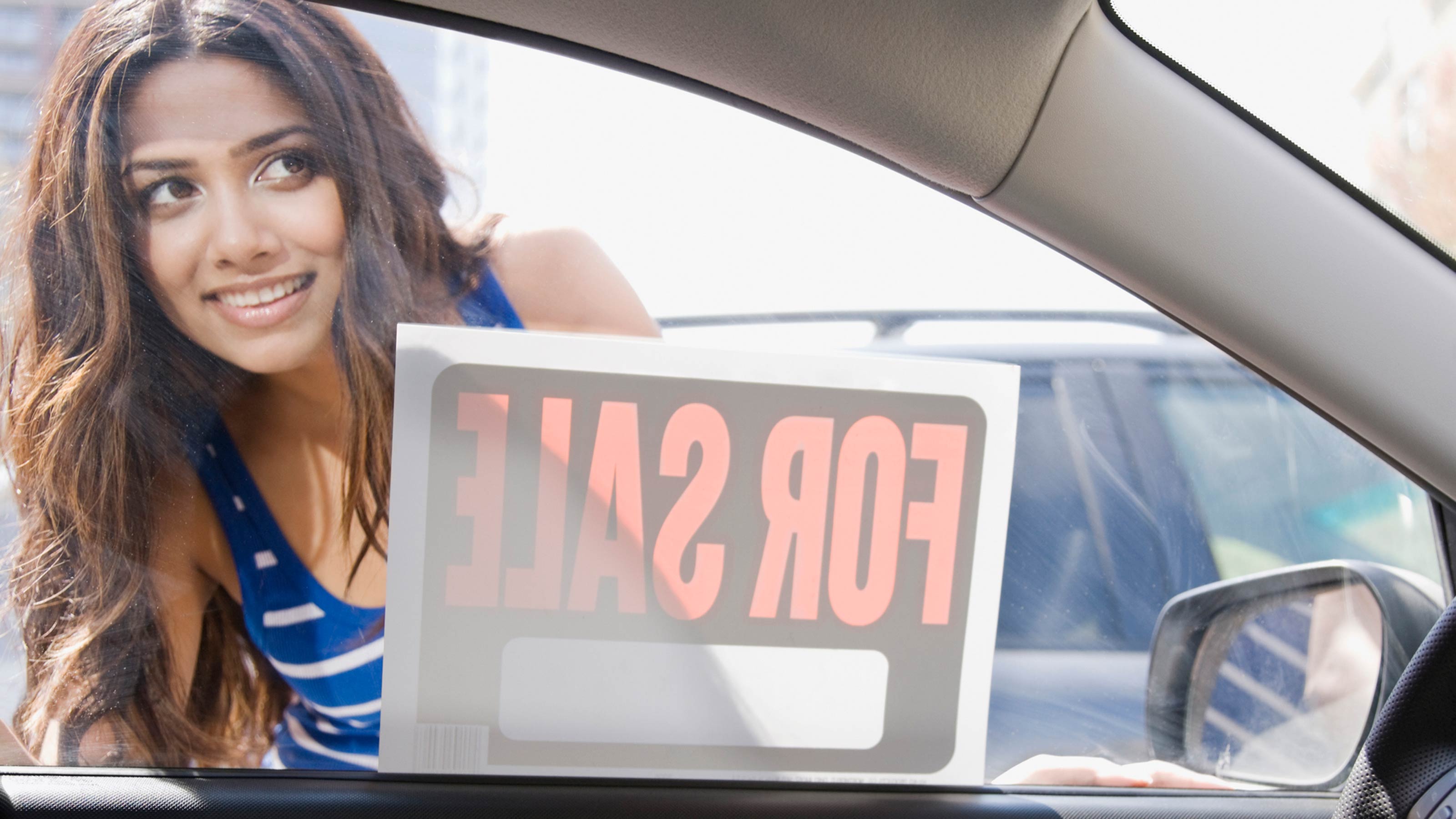Car Buying in a Topsy-Turvy Market
You need a new car? Good luck with that! What should you do? We've got some answers.

Buying a car isn’t like it used to be. If you're in the market, you've probably discovered that the usual rules about purchasing a new or used car, or leasing, no longer apply. In this environment, patience and creativity are paramount, as well as a willingness to consider car sharing as an option.
For the past year, the car market has been tighter than any time in recent history, as a pandemic-fueled shortage of semiconductor chips has limited the supply of vehicles and driven up prices of new, used and leased automobiles. Since August 2021, cars have sold above manufacturers’ suggested retail prices on average, according to data from Edmunds.com, an automotive information resource.
From just $107.88 $24.99 for Kiplinger Personal Finance
Become a smarter, better informed investor. Subscribe from just $107.88 $24.99, plus get up to 4 Special Issues

Sign up for Kiplinger’s Free Newsletters
Profit and prosper with the best of expert advice on investing, taxes, retirement, personal finance and more - straight to your e-mail.
Profit and prosper with the best of expert advice - straight to your e-mail.
Looking for older cars won’t help your budget the way it has in the past; a 1- to 2-year-old used car often will cost about as much as as the same-model new car in a dealer’s lot., according to automotive analysts. In the past year, average prices for new cars have climbed 10%, according to Edmunds.com. The price for all used cars is 7% higher, and prices for 9-year-old used cars have spiked 21%. (Some relief may be at hand here; Kiplinger sees used car prices as past their peak, with farther to fall in 2023.)
“The new car market right now is absolutely bonkers,” says Tom McParland, owner of Automatch Consulting, which helps buyers find vehicles. “Due to global supply issues, automakers can’t make as many cars as they want to make and therefore dealers don’t have as many cars as they want,” he explains. You’re going to overpay for a used car now, he adds, or you can wait for a new car, but “you could be waiting months or maybe a year. This is an adjustment period for a lot of American car shoppers.” And often you could buy a brand-new car for just a few dollars a month more than leasing it.
“In today’s market, you’re really up against the biggest problem the industry has ever faced when it comes to inventory allocation,” says Ivan Drury, senior manager of insights at Edmunds. “However you’ve bought in the past, it’s not going to be the same.”
The Car-Sharing Option
One alternative that could be a short-term—or long-term--option if you need to replace your vehicle or need another one: car sharing companies like Turo, Getaround and Zipcar. A twist on traditional rental car companies, these services let you find a car near your home, unlock it with an app on your smartphone, drive it without needing to stand in line or wait for keys at a car rental location, and return it to the same or a nearby location after you’re done.
When considering whether to own or share a car, look at the total cost of ownership, including interest on a car loan, insurance, maintenance, taxes and the cost of gas. On the Edmunds.com website, an online tool lets you estimate the expected annual cost of owning a specific vehicle in a specific zip code for the coming five years. (See https://www.edmunds.com/tco.html.)
“Car payments are budget busters, but the expense of owning a car doesn’t end there,” says Greg McBride, chief financial analyst at Bankrate.com, a personal finance website.
On average, cars are driven only six hours per week, sitting in a garage, driveway or parking spot for the majority of the time. “Personally owned vehicles in cities mostly go unused, sitting idle about 95% of the time, and for most people, it’s the second-most expensive thing they own,” says Justin Holmes, head of marketing and public policy for Zipcar, which reports that by sharing Zipcar vehicles, members spend $300 less per month than the $600 per month average monthly cost of owning a vehicle.
To be sure, using a car sharing service requires you to plan ahead and be willing to choose among the cars available when you want to rent. Where you live matters, too. The closer you are to public transportation and an urban center, the more likely you’ll have an abundant selection of vehicles and convenient pickup locations.
Whether you’re car sharing temporarily or using it as a permanent transportation solution, it helps to understand the competing services. The three major car sharing companies all allow you to sign up online or via a smartphone app, but you must have a smartphone in order to unlock and drive the vehicle. Some cities, including San Francisco, Seattle and Washington, D.C., provide dedicated car-share parking to make the option more convenient.
Founded in 2000, Zipcar is the oldest car share company. Zipcar owns a fleet of 12,000 cars across the U.S. and charges $90 per year or $9 per month for membership. Car rentals start at $11 per hour and $91.50 per day, with prices varying by geographic location. Zipcar reservations include gas, a dedicated parking spot, and secondary insurance, and you can drive 180 miles a day without paying more. Secondary insurance will only pay for an amount in excess of whatever primary insurance pays, whether that’s a car owner’s insurance or the renter’s.
The company’s website offers simple tutorial videos about how the process works and provides 24/7 member support. After you’re done with a rental, you return it to the same location with at least 1/4 of a tank — or use the included gas card to fill up the vehicle. The Zipcar app shows the exact make and model of the vehicle you will rent. Zipcar offers a discount through AARP.
The company claims that every Zipcar on the road eliminates the need for up to 13 personally owned vehicles. “Zipcar is driven by a mission to enable simple and responsible urban living by eliminating personally owned vehicles from the road,” Holmes says. “Less vehicles means less congestion and carbon emissions, and more space for people to enjoy.”
Getaround and Turo — both founded in 2009 — are peer-to-peer car sharing services, meaning individuals sign up and allow strangers to rent their personally owned cars through the platform. Both services offer 24/7 support and allow you to view photos of the specific car you’ll rent, with the make, model, year of manufacture, and ratings from people who rented that vehicle. Tesla, Jeep, and Toyota are among Turo's most-booked vehicles. On a recent search for a car in Washington, D.C., 128 Teslas were available, ranging from $56 to $300 a day, and 112 Jeeps were available, from $27 to $261 a day. (Unlike Zipcar and Getaround, Turo only rents by the day.)
You don't need personal insurance coverage if you book a trip with a protection plan made available via Turo, If you do have insurance, Turo’s liability insurance provider will supplement your personal coverage. Gas isn’t included, so you must fill the tank to the same level as when you started your trip. Turo recommends that you photograph the fuel gauge before and after your trip, as well as the gas station receipt.
Getaround is available in nearly 30 states, 8 countries and 950-plus cities worldwide. Rental fees begin at $8 an hour and vary based on the location, trip duration, and vehicle. People who drive with Uber but don’t own a car can rent a Getaround vehicle through an Uber partnership. That facilitates repeat rentals of the same car, giving both host and guest more predictability and comfort, notes Sy Fahimi, chief operating officer.
So You Still Want to Buy?
If you’re not sold on car sharing, experts offer a few strategies to find a car to buy: Take a strategic approach to purchasing, be flexible on features and time the transaction well.
“The greater your level of flexibility, the better your chances of success,” McParland says. Being open to a range of colors, makes and models, and options raises your odds of finding a vehicle. If you can wait longer and order a car from the factory or from a dealer in another city, even better.
Zaneilia Harris, 52, president of Harris Wealth Management in Upper Marlboro, Md., wanted to celebrate turning 50 by buying a new XC60 Volvo Recharge, a plug-in hybrid midsize SUV. She began looking in December 2021, after some research on the manufacturer’s website to determine which features she wanted. She signed up with CarGuru to be alerted when an available car matched her parameters. But when she visited dealerships to follow up on those notifications, she found that the car she identified on their website was already spoken for.
She purchased her car in May 2022, six months after first deciding to buy. She went to a dealership because of an alert, only to discover that the car she had hoped to see — dark gray with a light interior — wasn’t available. Instead, she test drove a car with a light gray exterior and dark interior.
“I liked it,” she says. “I wouldn’t have picked that color, but it just felt relaxing. At this point in my life, that matters.”
That kind of patient, flexible, and open-minded approach serves car buyers well, whether they're looking at new or used vehicles, McParland says. “There’s something to be said for, 'here’s my ideal car,' but get something that will hold you over and do the job for a period of time until the market resets,” he says. “Take a very hard and honest look at your finances and what’s going to work for your budget and lifestyle and plan accordingly.”
Purchasing a car generally makes more sense than leasing, says McParland. That assessment is based on the hundreds of lease quotes and purchase prices he has seen recently, That’s because dealers aren’t offering discounts or factory rebates the way they used to, and at the same time, in calculating lease payments, banks haven’t adjusted their depreciation calculations to account for the current hot market for used cars. As a result, for a typical three-year lease period, you’d pay more in lease payments than the combination of what you would pay for a car loan plus what you’d lose in depreciation. After the three years, if you want to trade in a car, you could sell it and end up ahead.
For example, McParland had a customer who wanted a new Toyota RAV4 and would have paid $560 a month for a 60-month car loan, versus $550 a month for a 36-month lease. If she leased the RAV4, she would surrender the car (or pony up additional money to buy it) after three years. But if she bought the car, after three years she would be 24 payments away from owning it free and clear--or she could sell it, pay off the loan and likely make a profit. McPartland says that calculation is consistent across hundreds of quotes and deals he’s looking at right now.
Another change in the market is how quickly vehicles move off lots. As a result, you need to act quickly and be judicious about haggling. “Used cars are generally available, but consumers are going to find inflated prices. Anything that’s popular is going to have a much faster turnaround than in the past,” McParland says. “The more back-and-forth they try to engage in the haggling process, the greater the likelihood that someone swoops in and buys that car out from under them.”
It could be as long as a year before the chip shortage changes, or a recession dampens demand for vehicles, Bankrate’s McBride says. Given how tight the automotive market is, car sharing can be a strategic option while you wait for your preferred vehicle to be in stock at a good price — or for the supply crunch to ease a bit.
Profit and prosper with the best of Kiplinger's advice on investing, taxes, retirement, personal finance and much more. Delivered daily. Enter your email in the box and click Sign Me Up.
Katherine Reynolds Lewis is an award-winning journalist, speaker and author of The Good News About Bad Behavior: Why Kids Are Less Disciplined Than Ever – And What to Do About It. Her work has appeared in The Atlantic, Fortune, Medium, Mother Jones, The New York Times, Parents, Slate, USA Today, The Washington Post and Working Mother, among others. She's been an EWA Education Reporting Fellow, Fund for Investigative Journalism fellow and Logan Nonfiction Fellow at the Carey Institute for Global Good. Residencies include the Virginia Center for the Creative Arts and Ragdale. A Harvard physics graduate, Katherine previously worked as a national correspondent for Newhouse and Bloomberg News, covering everything from financial and media policy to the White House.
-
 Stocks Struggle for Gains to Start 2026: Stock Market Today
Stocks Struggle for Gains to Start 2026: Stock Market TodayIt's not quite the end of the world as we know it, but Warren Buffett is no longer the CEO of Berkshire Hathaway.
-
 Tip: Ways to Track Your Credit Card Rewards
Tip: Ways to Track Your Credit Card RewardsHere are the best strategies and apps to help you stay current with your credit card rewards.
-
 How New Investors Can Pick Their Perfect Portfolio, According to a Pro
How New Investors Can Pick Their Perfect Portfolio, According to a ProSee what Cullen Roche has to say about finding your perfect portfolio as a new investor and his two-word answer on where he thinks the stock market is headed in 2026.
-
 10 Things You Should Know About Buying a Car Today, Even if You've Bought Before
10 Things You Should Know About Buying a Car Today, Even if You've Bought BeforeIf buying a car is on your to-do list, and it's been a while since you went shopping for a new one, this guide will help avoid any nasty shocks in the showroom.
-
 Get the Best Car Deal in Retirement: Here's the Trick
Get the Best Car Deal in Retirement: Here's the TrickPlanning on shopping for a new car this Labor Day weekend? Here’s how to haggle for a better price, even though you're retired.
-
 7 Gas-Saving Tips That Actually Work
7 Gas-Saving Tips That Actually WorkThese are gas-saving tips that will actually work for you and your car this year.
-
 Want to Lease an EV? The Tax Credit 'Loophole' for That Is Going Away Soon
Want to Lease an EV? The Tax Credit 'Loophole' for That Is Going Away SoonTax Credits If you are deciding whether to lease or buy an electric vehicle, here is what you need to know about how the EV lease tax credit works now that it will be eliminated under Trump's new tax law.
-
 Watch Out for Flood-Damaged Cars from Hurricane Ian
Watch Out for Flood-Damaged Cars from Hurricane IanBuying & Leasing a Car In the wake of Hurricane Ian, more flood-damaged cars may hit the market. Car prices may rise further because of increased demand as well.
-
 Car Buyers: The 3-Day Grace Period Is Just a Myth!
Car Buyers: The 3-Day Grace Period Is Just a Myth!Buying & Leasing a Car Many car buyers think they have three days after making a purchase to return a car. Here’s where they’re going wrong, and what they should do instead to get a decent used car.
-
 PODCAST: Car-Buying in an Inflated Market with Jenni Newman
PODCAST: Car-Buying in an Inflated Market with Jenni NewmanBuying & Leasing a Car With cars both scarce and expensive these days, what to do if you want – or need – a new ride? Car-buying strategist Jenni Newman of Cars.com shares some tips. Also, more on the magical 9% savings bond.
-
 The "Real" Cost of Buying a Car
The "Real" Cost of Buying a CarFeature Atlanta Falcons linebacker and Kiplinger contributing editor Brandon Copeland illustrates how car prices are far more than meets the eye.